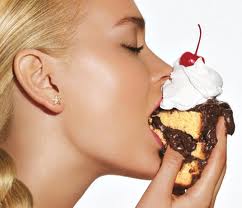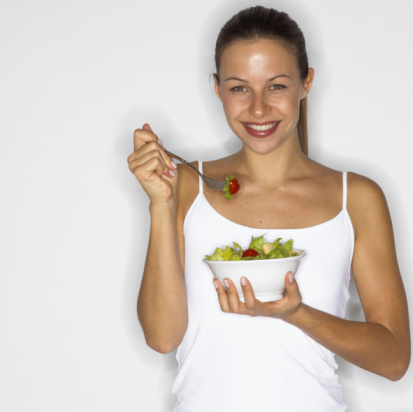
Many people spend what they think is a lot of time in the gym or working out. In fact, the Bureau of Labor Statistics reports that 16 percent of people (aged 15 years and older) who live in the United States participate in sports and exercise activities on an average day.
As a side note, this in comparison to the number of people who watch television on an average day is roughly five times larger.
The majority of people are self-reporting that they spend one to one and a half hour exercising each day (5-6 days a week).
And while walking seems to be the number one choice for exercise among those surveyed, followed by weightlifting, why are the numbers of obese and overweight people raising more and more every year?
It very much has to do with the other side of fitness, health, and wellness.

Many fitness experts explain it very clearly, that working out and exercise routines (as challenging as they may seem) are only 20% of the fitness formula.
The other 80% lies in dietary consumption. Dr. Mercola writes in his blog, "If you're like most people—including many athletes—you're probably eating too many carbs.
The body's need for sugar is, biologically, very small. And when people consume more than they need, the body turns it into fat.
As I've stated before, you do not get fat from eating fat—you get fat from eating too many carbs (sugar)." (Please also read the article "Are Carbs Making Us Fat" on the truthNhealth.com site).
In a nutshell, carbohydrates stimulate secretion of the hormone insulin, which works, among other things, to store fat in our fat cells. On a more scientific note, our skeletal muscles hold roughly about 250 grams of glucose (and liver holds about 70 grams).
Consuming more than 320 grams (depending on the person) forces the body to process the excess carbohydrates by producing body fat, a process called novel glycogenosis.
Because of the habitual Western world's diet filled with refined sugars, white flour, and processed sugary foods, we have taxed our metabolisms and forced ourselves into obesity.
But let me remind everyone that this lifestyle can be turned around, with a balanced combination of consistent body movement and interval training (that challenges the body), whole foods diet (with low carbs and good fats) and a positive can-do-it attitude.
Body By Science's Dr. McGuff says that "Through an amplification cascade, when you're doing a high-intensity exercise, you very aggressively empty sugar out of your muscle cells.
By doing that and combining over the low-carbohydrate diet, you start to heal the metabolism," Dr. McGuff explains. "You're able to access your energy source finally. That's how you can turn things around.
Just by understanding that everything about optimal health and wellness starts with the foods you consume, is a monumental milestone in our journey to health enlightenment.
Dr. McGuff encourages everyone to take their first steps toward improving their diet by cutting out as much sugar/fructose and grain-carbs as possible. Below is a short blurb on just how to do that.
"Fructose is a simple sugar that occurs naturally in honey and in most fruits and vegetables, in smaller amounts. It’s also a component of table sugar, which is derived from sugar cane.
Read your food labels and eliminate all forms of high-fructose corn syrup, or HFCS, as it is often added as a concentrated sweetener to processed foods including soft drinks, fruit drinks, jams and jellies, cookies and desserts, ice creams and heavy-syrup canned fruits.
Emphasize healthy, minimally-processed, whole, organic and seasonal foods in your daily diet. Choose lean, (as much plant based as possible) protein, whole-grain and sprouted breads and pastas and lots of fresh and local vegetables and fruits.
Snack on vegetables, low-fat cheeses and whole-grain crackers and drink clean water, green tea other unsweetened beverages instead of sodas, cookies, pastries and candy.
Source: Livestrong.com
After a cardiovascular workout, wait 30-45 minutes and then consume a high-quality source of protein (whole food) and vegetable-type carbohydrate.
Some fitness gurus really praise the high protein whey shakes that promise to deliver the protein to your muscles for repair faster than whole foods or high-fat foods can (slows digestion and protein absorption). An example would be a spinach salad and some chicken.
The reason why you'll want to wait a bit after the session to eat is to ride the fat burning wave of your cardio session. Some experts say that the window of fat burning ends after 60 minutes, and then the body sets into starvation mode, where they hold onto fat and send all sources eaten into glycogen storage.
After a resistance workout (weight lifting and muscle building) you need a different approach. The meal after a resistance workout is the only meal that you ever want to be absorbed rapidly.
Because typically, when a meal is absorbed fast because of high glycemic or simple carbs, there is a good chance your blood sugar will rise too fast, and the carbohydrates will be stored as body fat.
But after a resistance workout, you've just primed the pump with an intense workout (with weights), and you have a one hour window of opportunity to shuttle in nutrients, amino acids, glycogen, and other anabolic nutrients to help repair your damaged muscles.
If you miss this one hour window after your intense workout, the chances that your muscles will be able to repair themselves, which makes them bigger and stronger, diminish significantly.
Keep in mind that after a workout, your stomach and digestive tract do not function as efficiently. The reason is that your digestive tract is incredibly vascular and uses significant amounts of blood to do its job.
The problem arises because much of your blood is in the muscles that you just finished training. So an adequate amount of blood is not available to digest food eaten after a workout.
For this reason, the best post workout meal on resistance training days is whey protein and a higher glycemic (fast released, starchy) carbohydrate. You can use a banana as your carb.
The potassium in the banana seems to help with recovery. The whey protein is already pre-digested so it is absorbed rapidly.
You'll want to consume your fast released post workout meal 15-30 minutes after an intense weight training session.
As for how much, there is a wide range of opinions of how much is right. The big thing to remember here is that no two bodies are alike and not everyone has the same fitness routine or end goal.
Try to consume between 0.15-0.25 grams of protein per pound of your body weight (so a 175lb person would shoot for between 26-43 grams) for people who are maintaining or trying to lose weight.
Research has shown that eating 0.3-0.6 grams of carbohydrate for each pound of body weight within two hours of endurance exercise is essential to building adequate glycogen stores for continued training.
People who are VERY overweight should use their target body weight instead of their current body weight when doing this calculation. 
Remember to take small steps and write down your goals and progress. Nutrition is a HUGE KEY, though. The physical part of health and wellness may take many steps.
The first step for you may be to put on your tennis shoes and then go for that walk outside.
Eventually, you may feel inspired to jog a little. Maybe that turns into jogging a few times a week. And that will inspire you to cook more at home (rather than eating out).
You have to start with a plan and then the positive attitude that you can do it. Find your motivation, your mantra and your inspiration. Train hard. Challenge yourself and you will begin to feel good and see the results unfold.
Ask a lot of questions and reach out for help if you need it.
You deserve it.
